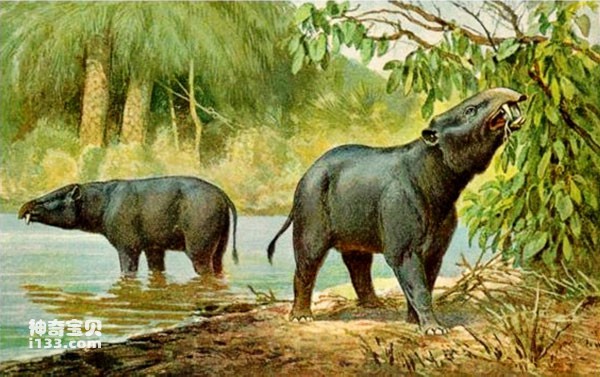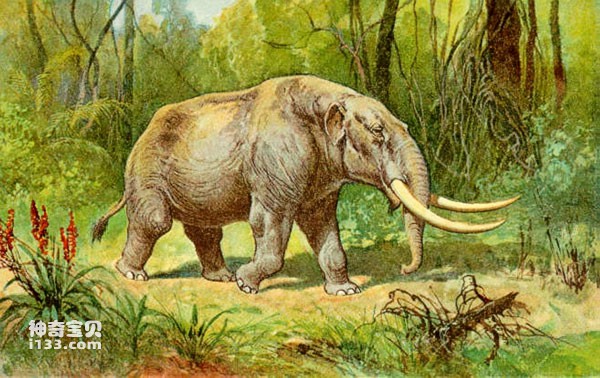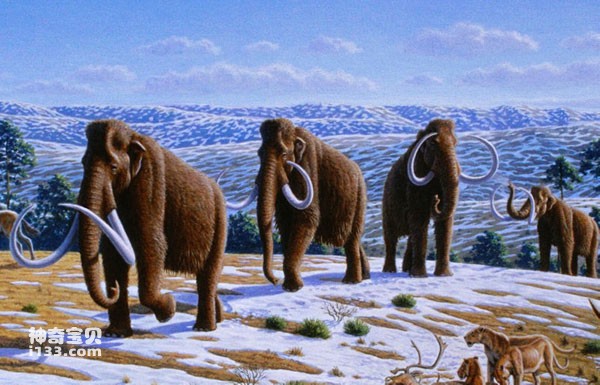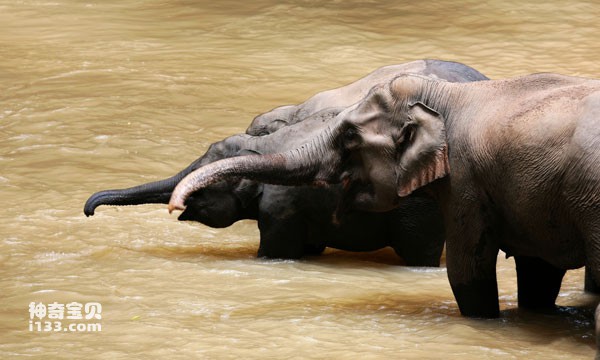1. Primitive proboscis without trunk

For a long time before the emergence of Apatosaurus, people generally believed that the most primitive ancestor of Elephants-Are-Endangered.html">elephants was the Elephantus. It appeared in Africa during the Eocene epoch 50 million years ago, without tusks and trunks. The scientific name of the ancestral elephant is Moeritherium, which means the beast from Lake Moeris in Egypt. They are small, about the same size as modern Malayan tapirs, have 5 toes, and have long tails. There are several different species. The ancestor elephant lived in swamps and riversides, feeding on soft aquatic plants, and its ecological niche was similar to today's hippopotamus.

2. Mastodons with real trunks
The most important evolutionary link between the primitive proboscideans and today's proboscis, the mastodon, arrived in Europe shortly after the Early Tertiary Period (about 30 million years ago), and then radiated to eastern Asia in a short period of time ( During this historical period, the Sahara and the Red Sea had not yet formed, and the ancient Mediterranean extended into Asia). In the Old World, mastodons began to become extinct in the early Quaternary Ice Age (which began 2 to 3 million years ago and ended 10,000 to 20,000 years ago). In the New World (American continent), they survived until the Quaternary Ice Age. late stage.
Mastodons are composed of numerous species, among which Mastodons are named after the grinding surfaces of their molars, which are blunt and conical like nipples to facilitate chewing and pounding leaves. Its teeth have multiple layers of lamellar structures that are fused together.

3. The real elephant with a long nose
With the entry of the Quaternary Ice Age, the mastodon species became extinct, and the Elephants-Are-Endangered.html">elephants that adapted to cold weather exploded and quickly occupied Europe, Africa and North America. Elephants with high crown teeth can not only squeeze food, but also grind harder plants. Among them, the species that live in the forest environment are rhomboids, and those that live in the grassland environment are mammoths. They all originated from the ancient elephants in the south. , became extinct during the Holocene (11,500 years ago to the present). The last mammoths became extinct in North America and Siberia around 10,000 years ago, and well-preserved carcasses and hair can still be found. Some scholars believe that the extinction of mammoths was caused by climate change, while others believe that it was due to hunting by prehistoric humans.

4. Today’s descendants of the truth class
Among the true elephants, the African elephant originated earlier than the Asian elephant. In the early Quaternary Ice Age, when the Sahara area dried out and the northern species disappeared with the emergence of humans, African elephants appeared on the African continent. The Asian elephant was once distributed in a vast area from West Asia to southern China.
The only remaining descendants of the proboscideans still dominate the African savannah jungles and Asian tropical jungles. Their distinctive long noses and tusks still shine with the immortal afterglow of their previous lives.
animal tags:
We created this article in conjunction with AI technology, then made sure it was fact-checked and edited by a Animals Top editor.